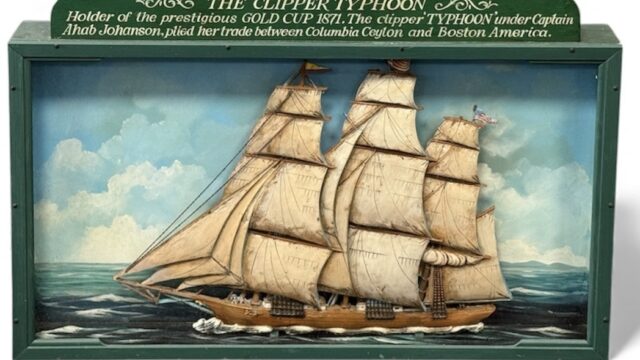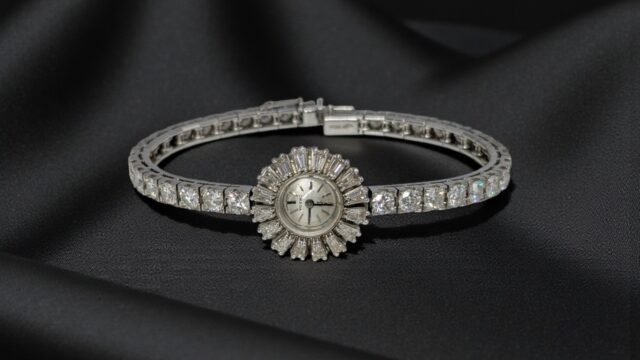Nantgarw & Swansea Porcelain
The production of fine Welsh porcelain as opposed to Welsh pottery lasted a very short time - from 1813 to 1826. Swansea pottery had a far longer history, having been produced on a much larger scale for over one hundred years. Both Swansea pottery and porcelain are connected as the works were on the same site. The Nantgarw porcelain factory is also closely tied with the Swansea manufacturers because the production experiments at Nantgarw influenced the later techniques in Swansea. Also, one gentleman had the greatest influence over both factories.

Sold £5500

Sold £11000

Sold £5000
The man behind Welsh porcelain was William Billingsley. Born in 1758, he was initially the leading botanical decorator at the Derby porcelain factory. Then in 1813, in the village of Nantgarw on the River Taff, six miles north of Cardiff, Billingsley established a porcelain works, which within a year was producing superb soft-paste porcelain. In fact, academics say that the quality in terms of colour and translucency, was bettered only by Sevres in France. It is also assumed that the quality has not been surpassed in Britain since.
The production of such high-quality porcelain at Nantgarw was costly and much of the porcelain suffered kiln collapse, thus Billingsley encountered considerable financial loss. As a result, it was necessary for him to introduce new partners to the business, notably William Weston Young and Lewis Weston Dillwyn. Dillwyn moved the production to Swansea, with the aim of becoming more commercially viable, and to attempt to stabilise the erratic unreliable Nantgarw porcelain formula. So, from 1814, porcelain was produced at the site of the Cambrian pottery works in Swansea (located where Swansea High Street railway station is now).
In 1818, William Billingsley left Swansea and returned to Nantgarw to reopen the works with the aim of producing the highest quality porcelain for the top-end of the London market. His desire was for it to be decorated by the esteemed London decorators of the time. Indeed, his plan worked to some extent as the porcelain that was produced was again exquisite and was in demand from the upper classes, it was also a success in that most Nantgarw porcelain was decorated in London for the London market, with only a small proportion decorated locally (the reverse is true for the Swansea operation - with a smaller proportion of items decorated in London).
However, the quality of Nantgarw porcelain still came at a high cost and the high rate of failure in the kiln continued, meaning that again, sadly for Billingsley, the venture at Nantgarw was not commercial. In 1823, the Nantgarw factory closed (apart from a small works for utilitarian products such as tobacco pipes – which lasted until about 1920). To recover some of the investment in the Nantgarw business, Thomas Pardoe was employed to decorate the remaining undecorated Nantgarw stock, it was then sold off at auctions in 1821 and 1822.
In Swansea, the production of porcelain was more viable, they were able to produce a more stable reliable porcelain. However, the factory was taken over by the Bevington Partnership in 1817 and reverted to producing pottery. When the porcelain production was ceased, they continued to employ some of the decorators to work on remaining undecorated stock. Similarly, to Nantgarw, this remaining stock of Swansea porcelain was sold by auction in January 1826.
How is Swansea and Nantgarw porcelain perceived today?
Even to the non-collector of porcelain, the quality is admired. When we hold pieces up to a strong light we can see directly through the porcelain as though it is glass. Anyone who enjoys fine art can admire the precise and beautiful decoration. The flora, fauna, landscapes, and figures are of the finest quality with some items decorated by the best artists of the age.
Some of the porcelain was decorated to be an individual unique item, other pieces were fashioned in set patterns influenced by the taste of the day. Some of the hand-painted sets relate to commissions by wealthy landowners or aristocracy – such as the Duke of Cambridge service and the Burdett Coutts service. This gives items impeccable provenance and adds to the fascinating history of these wonderful objects.
The highest standards of quality porcelain did not diminish in the short time that Welsh porcelain was produced. This very short time span of high-quality production from both the Swansea and Nantgarw factories gives Welsh porcelain ‘The Beatles’ factor for collectors, it also means that Nantgarw and Swansea porcelain is rarer than most comparisons from Staffordshire, Derby and Worcester porcelain.
The other unique selling point is that it is all Welsh, of course. It is a Welsh story and it is incredible to be able to say that possibly the finest porcelain in the world was produced in Wales – albeit for a short time. Welsh porcelain really does attract patriotic Welsh collectors and many of these collectors are still thirsty for more knowledge, rarer items, and additions to their collections.
The Market
he man behind Welsh porcelain was William Billingsley. Born in 1758, he was initially the leading botanical decorator at the Derby porcelain factory. Then in 1813, in the village of Nantgarw on the River Taff, six miles north of Cardiff, Billingsley established a porcelain works, which within a year was producing superb soft-paste porcelain. In fact, academics say that the quality in terms of colour and translucency, was bettered only by Sevres in France. It is also assumed that the quality has not been surpassed in Britain since.
The production of such high-quality porcelain at Nantgarw was costly and much of the porcelain suffered kiln collapse, thus Billingsley encountered considerable financial loss. As a result, it was necessary for him to introduce new partners to the business, notably William Weston Young and Lewis Weston Dillwyn. Dillwyn moved the production to Swansea, with the aim of becoming more commercially viable, and to attempt to stabilise the erratic unreliable Nantgarw porcelain formula. So, from 1814, porcelain was produced at the site of the Cambrian pottery works in Swansea (located where Swansea High Street railway station is now).
In 1818, William Billingsley left Swansea and returned to Nantgarw to reopen the works with the aim of producing the highest quality porcelain for the top-end of the London market. His desire was for it to be decorated by the esteemed London decorators of the time. Indeed, his plan worked to some extent as the porcelain that was produced was again exquisite and was in demand from the upper classes, it was also a success in that most Nantgarw porcelain was decorated in London for the London market, with only a small proportion decorated locally (the reverse is true for the Swansea operation - with a smaller proportion of items decorated in London).
However, the quality of Nantgarw porcelain still came at a high cost and the high rate of failure in the kiln continued, meaning that again, sadly for Billingsley, the venture at Nantgarw was not commercial. In 1823, the Nantgarw factory closed (apart from a small works for utilitarian products such as tobacco pipes – which lasted until about 1920). To recover some of the investment in the Nantgarw business, Thomas Pardoe was employed to decorate the remaining undecorated Nantgarw stock, it was then sold off at auctions in 1821 and 1822.
In Swansea, the production of porcelain was more viable, they were able to produce a more stable reliable porcelain. However, the factory was taken over by the Bevington Partnership in 1817 and reverted to producing pottery. When the porcelain production was ceased, they continued to employ some of the decorators to work on remaining undecorated stock. Similarly, to Nantgarw, this remaining stock of Swansea porcelain was sold by auction in January 1826.
How is Swansea and Nantgarw porcelain perceived today?
Even to the non-collector of porcelain, the quality is admired. When we hold pieces up to a strong light we can see directly through the porcelain as though it is glass. Anyone who enjoys fine art can admire the precise and beautiful decoration. The flora, fauna, landscapes, and figures are of the finest quality with some items decorated by the best artists of the age.
Some of the porcelain was decorated to be an individual unique item, other pieces were fashioned in set patterns influenced by the taste of the day. Some of the hand-painted sets relate to commissions by wealthy landowners or aristocracy – such as the Duke of Cambridge service and the Burdett Coutts service. This gives items impeccable provenance and adds to the fascinating history of these wonderful objects.
The highest standards of quality porcelain did not diminish in the short time that Welsh porcelain was produced. This very short time span of high-quality production from both the Swansea and Nantgarw factories gives Welsh porcelain ‘The Beatles’ factor for collectors, it also means that Nantgarw and Swansea porcelain is rarer than most comparisons from Staffordshire, Derby and Worcester porcelain.
The other unique selling point is that it is all Welsh, of course. It is a Welsh story and it is incredible to be able to say that possibly the finest porcelain in the world was produced in Wales – albeit for a short time. Welsh porcelain really does attract patriotic Welsh collectors and many of these collectors are still thirsty for more knowledge, rarer items, and additions to their collections.
Below is a selection of Nantgarw porcelain items that we have sold in The Welsh Sale auction over the years. See yesterday’s post for highlights from Swansea porcelain. As always, we would love to discuss with you your Welsh porcelain and informal valuations are provided without charge or obligation.









































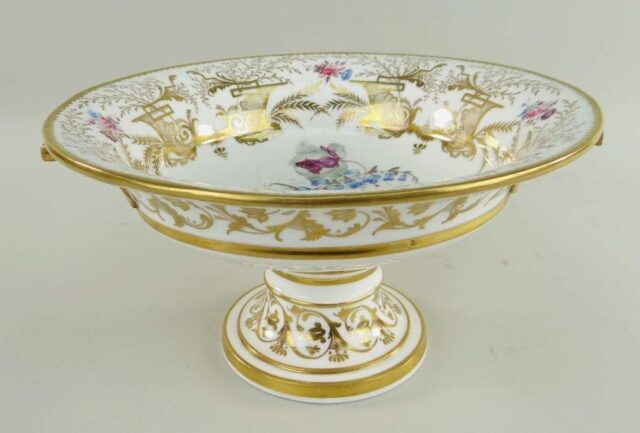







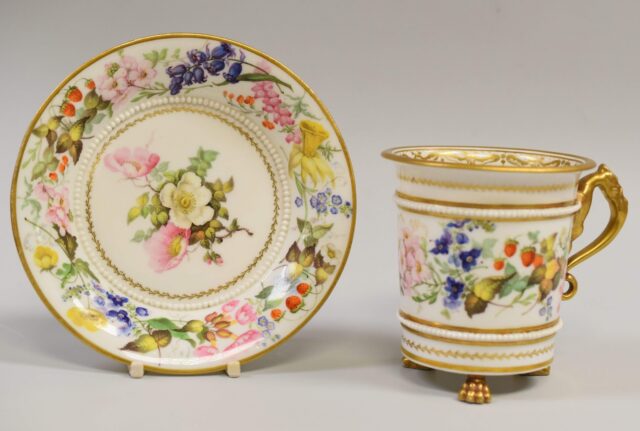




























































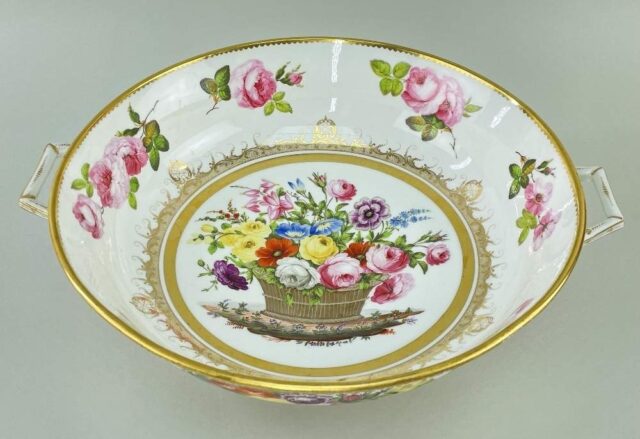














Below is a summary of some of the main protagonists in the Welsh porcelain story at Swansea and Nantgarw:
- William Billingsley (1758 – 1828): influential porcelain painter who started Nantgarw China Works, helped establish Swansea porcelain and then returned to Nantgarw with lofty ambitions
-William Weston Young (1776 – 1847): wealthy Quaker entrepreneur, botanist and artist who became William Billingsley’s most influential investor
-Lewis Weston Dillwyn (1778 – 1855): Quaker, porcelain manufacturer, botanist, artist, publisher, and politician. Owner of Swansea Cambrian Pottery
-Thomas Baxter (1782 – 1821): watercolourist, porcelain decorator and gilder, worked at Worcester and then Swansea for three years
-Thomas Pardoe (1770 – 1823): celebrated decorator, enameller, and flower painter, decorated at Derby and Worcester, came to Nantgarw in 1821 where he died two years later
-David Evans (d. 1882): famous local flower and fruit painter at Swansea, worked in Staffordshire, Worcester and Coalport after the closure of the Swansea works in 1826
-Henry Morris (1797 – 1881): highly regarded flower decorator and apprentice to L W Dillwyn at Cambrian Pottery
-William Pollard (1803 -1854) probably the best-known artist at Swansea, specialising in flowers especially a specific specimen of rose
-George Beddow: topographical and landscape vignettes painter at Swansea, often worked in sepia palette
-Sims Workshop: London firm of enamellers and porcelain decorators, who painted and fired Nantgarw and Swansea china when received from Wales undecorated
-James Turner: London porcelain decorator, formerly of Derby porcelain then decorator of Nantgarw porcelain at Sims Workshop in London
-Moses Webster (1792-1870): fine London decorator of Nantgarw porcelain
-Mortlock & Co: china dealers in London, acted as the London agent for Nantgarw porcelain
-Robins & Randall: London potters who fired the Nantgarw porcelain after it was painted by London artists
-Sir Leslie Joseph (1908 – 1992): Porthcawl businessman and Welsh porcelain researcher and author who accumulated the largest single owner collection of Welsh porcelain in the world. His death in 1992 preceded an auction of around 900 lots realising in excess of £1.1m. We frequently handle Welsh porcelain items with Sir Leslie Joseph’s label attached.
If you have a single item or a collection of Swansea or Nantgarw porcelain that you would like to have assessed. Or if you have an item you are unsure whether it is by the two factories then auctioneer and specialist Ben Rogers Jones would love to hear from you.
Assessments or advice can be provided free of charge and without obligation
Please email ben.rogersjones@rogersjones.co.uk

Ben Rogers Jones BA (Anrh)
HYNAFOLION A CHELF GYMREIG & ARBENIGWR HEN BETHAU’R BYD CHWARAEON






